Phenanthrene-9,10-dione
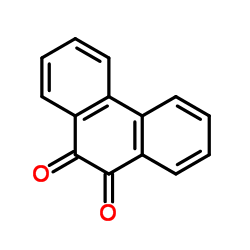
Phenanthrene-9,10-dione structure
|
Common Name | Phenanthrene-9,10-dione | ||
|---|---|---|---|---|
| CAS Number | 84-11-7 | Molecular Weight | 208.212 | |
| Density | 1.3±0.1 g/cm3 | Boiling Point | 360.0±0.0 °C at 760 mmHg | |
| Molecular Formula | C14H8O2 | Melting Point | 209-212 °C(lit.) | |
| MSDS | Chinese USA | Flash Point | 163.1±4.4 °C | |
| Symbol |

GHS07 |
Signal Word | Warning | |
| Name | 9,10-phenanthroquinone |
|---|---|
| Synonym | More Synonyms |
| Density | 1.3±0.1 g/cm3 |
|---|---|
| Boiling Point | 360.0±0.0 °C at 760 mmHg |
| Melting Point | 209-212 °C(lit.) |
| Molecular Formula | C14H8O2 |
| Molecular Weight | 208.212 |
| Flash Point | 163.1±4.4 °C |
| Exact Mass | 208.052429 |
| PSA | 34.14000 |
| LogP | 3.13 |
| Vapour Pressure | 0.0±0.8 mmHg at 25°C |
| Index of Refraction | 1.659 |
| Stability | Stable. Incompatible with strong oxidizing agents. |
Synonym: Section 2 - COMPOSITION, INFORMATION ON INGREDIENTS
Risk Phrases: 36/37/38 Section 3 - HAZARDS IDENTIFICATION EMERGENCY OVERVIEW
Irritating to eyes, respiratory system and skin.The toxicological properties of this material have not been fully investigated. Potential Health Effects Eye: May cause eye irritation. The toxicological properties of this material have not been fully investigated. Skin: May cause skin irritation. The toxicological properties of this material have not been fully investigated. Ingestion: May cause gastrointestinal irritation with nausea, vomiting and diarrhea. The toxicological properties of this substance have not been fully investigated. Inhalation: May cause respiratory tract irritation. The toxicological properties of this substance have not been fully investigated. Chronic: No information found. Section 4 - FIRST AID MEASURES Eyes: Flush eyes with plenty of water for at least 15 minutes, occasionally lifting the upper and lower eyelids. Get medical aid immediately. Skin: Get medical aid. Flush skin with plenty of water for at least 15 minutes while removing contaminated clothing and shoes. Wash clothing before reuse. Ingestion: If victim is conscious and alert, give 2-4 cupfuls of milk or water. Never give anything by mouth to an unconscious person. Get medical aid immediately. Inhalation: Remove from exposure and move to fresh air immediately. If not breathing, give artificial respiration. If breathing is difficult, give oxygen. Get medical aid. Notes to Physician: Section 5 - FIRE FIGHTING MEASURES General Information: As in any fire, wear a self-contained breathing apparatus in pressure-demand, MSHA/NIOSH (approved or equivalent), and full protective gear. During a fire, irritating and highly toxic gases may be generated by thermal decomposition or combustion. Extinguishing Media: Use water spray, dry chemical, carbon dioxide, or appropriate foam. Section 6 - ACCIDENTAL RELEASE MEASURES General Information: Use proper personal protective equipment as indicated in Section 8. Spills/Leaks: Clean up spills immediately, observing precautions in the Protective Equipment section. Sweep up, then place into a suitable container for disposal. Avoid generating dusty conditions. Provide ventilation. Section 7 - HANDLING and STORAGE Handling: Wash thoroughly after handling. Remove contaminated clothing and wash before reuse. Use with adequate ventilation. Minimize dust generation and accumulation. Avoid contact with eyes, skin, and clothing. Keep container tightly closed. Avoid ingestion and inhalation. Storage: Store in a tightly closed container. Store in a cool, dry, well-ventilated area away from incompatible substances. Section 8 - EXPOSURE CONTROLS, PERSONAL PROTECTION Engineering Controls: Use adequate ventilation to keep airborne concentrations low. Exposure Limits CAS# 84-11-7: Personal Protective Equipment Eyes: Wear appropriate protective eyeglasses or chemical safety goggles as described by OSHA's eye and face protection regulations in 29 CFR 1910.133 or European Standard EN166. Skin: Wear appropriate protective gloves to prevent skin exposure. Clothing: Wear appropriate protective clothing to prevent skin exposure. Respirators: Follow the OSHA respirator regulations found in 29 CFR 1910.134 or European Standard EN 149. Use a NIOSH/MSHA or European Standard EN 149 approved respirator if exposure limits are exceeded or if irritation or other symptoms are experienced. Section 9 - PHYSICAL AND CHEMICAL PROPERTIES Physical State: Granules Color: orange-red Odor: None reported. pH: Not available. Vapor Pressure: Not available. Viscosity: Not available. Boiling Point: 360 deg C Freezing/Melting Point: 209.00 - 211.00 C Autoignition Temperature: 630 deg C ( 1,166.00 deg F) Flash Point: Not available. Explosion Limits, lower: Not available. Explosion Limits, upper: Not available. Decomposition Temperature: Solubility in water: Slightly soluble. Specific Gravity/Density: Molecular Formula: C14H8O2 Molecular Weight: 208.22 Section 10 - STABILITY AND REACTIVITY Chemical Stability: Stability unknown. Conditions to Avoid: Incompatible materials, dust generation, strong oxidants. Incompatibilities with Other Materials: Oxidizing agents. Hazardous Decomposition Products: Carbon monoxide, carbon dioxide, acrid smoke and fumes. Hazardous Polymerization: Has not been reported. Section 11 - TOXICOLOGICAL INFORMATION RTECS#: CAS# 84-11-7: SF7875000 LD50/LC50: Not available. Carcinogenicity: Phenanthrenequinone, tech. - Not listed by ACGIH, IARC, or NTP. Other: See actual entry in RTECS for complete information. Section 12 - ECOLOGICAL INFORMATION Section 13 - DISPOSAL CONSIDERATIONS Dispose of in a manner consistent with federal, state, and local regulations. Section 14 - TRANSPORT INFORMATION IATA Not regulated as a hazardous material. IMO Not regulated as a hazardous material. RID/ADR Not regulated as a hazardous material. Section 15 - REGULATORY INFORMATION European/International Regulations European Labeling in Accordance with EC Directives Hazard Symbols: XI Risk Phrases: R 36/37/38 Irritating to eyes, respiratory system and skin. Safety Phrases: S 22 Do not breathe dust. S 24/25 Avoid contact with skin and eyes. S 28A After contact with skin, wash immediately with plenty of water. S 37 Wear suitable gloves. S 45 In case of accident or if you feel unwell, seek medical advice immediately (show the label where possible). WGK (Water Danger/Protection) CAS# 84-11-7: No information available. Canada CAS# 84-11-7 is listed on Canada's NDSL List. CAS# 84-11-7 is not listed on Canada's Ingredient Disclosure List. US FEDERAL TSCA CAS# 84-11-7 is listed on the TSCA inventory. SECTION 16 - ADDITIONAL INFORMATION N/A |
CHEMICAL IDENTIFICATION
HEALTH HAZARD DATAACUTE TOXICITY DATA
MUTATION DATA
|
| Symbol |

GHS07 |
|---|---|
| Signal Word | Warning |
| Hazard Statements | H315-H319-H335 |
| Precautionary Statements | P261-P305 + P351 + P338 |
| Personal Protective Equipment | dust mask type N95 (US);Eyeshields;Gloves |
| Hazard Codes | Xi:Irritant |
| Risk Phrases | R36/37/38 |
| Safety Phrases | S26-S36-S24/25-S22 |
| RIDADR | UN3077 |
| WGK Germany | 3 |
| RTECS | SF7875000 |
| Packaging Group | III |
| Hazard Class | 9 |
| HS Code | 29146990 |
| Precursor 10 | |
|---|---|
| DownStream 10 | |
| HS Code | 2914399090 |
|---|---|
| Summary | 2914399090. other aromatic ketones without other oxygen function. VAT:17.0%. Tax rebate rate:13.0%. . MFN tariff:5.5%. General tariff:30.0% |
|
Fluorescence Titrations of Bio-relevant Complexes with DNA: Synthesis, Structural Investigation, DNA Binding/Cleavage, Antimicrobial and Molecular Docking Studies.
J. Fluoresc. 25 , 1127-40, (2015) In the present work, we attempted to develop new metal complexes (Cu(II), Co(II), Ni(II) and Zn(II)) of the imine ligand which was synthesized from 9,10-phenanthrenequinone and para-anisidine. With an... |
|
|
Sulfa drugs inhibit sepiapterin reduction and chemical redox cycling by sepiapterin reductase.
J. Pharmacol. Exp. Ther. 352(3) , 529-40, (2015) Sepiapterin reductase (SPR) catalyzes the reduction of sepiapterin to dihydrobiopterin (BH2), the precursor for tetrahydrobiopterin (BH4), a cofactor critical for nitric oxide biosynthesis and alkylgl... |
|
|
3-Deoxyglucosone: a potential glycating agent accountable for structural alteration in H3 histone protein through generation of different AGEs.
PLoS ONE 10(2) , e0116804, (2015) Advanced glycation end-products (AGEs) are heterogeneous group of compounds, known to be implicated in diabetic complications. One of the consequences of the Maillard reaction is attributed to the pro... |
| Phenanthrenequinone |
| MFCD00001163 |
| 9,10-phenanthraquinone |
| 9,10-Phenanthrenedione |
| phenanthrene-9,10-dione |
| EINECS 201-515-5 |
| 9,10-Phenanthrenequinone |
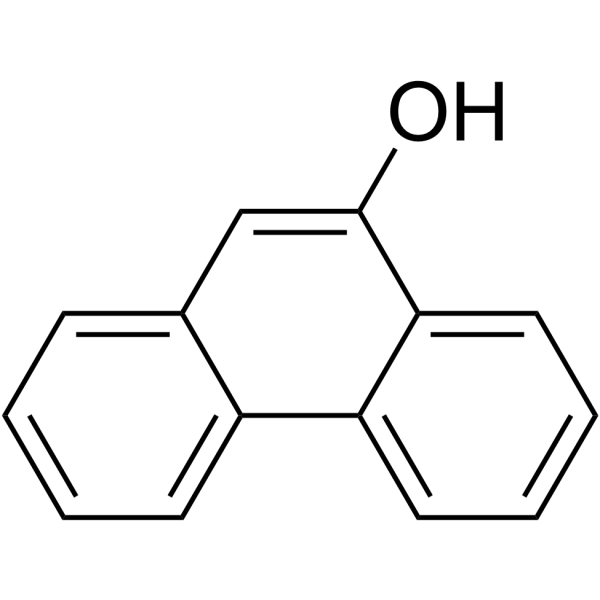 CAS#:484-17-3
CAS#:484-17-3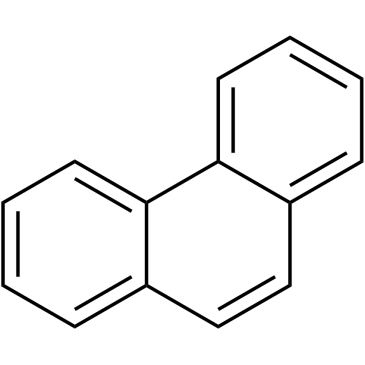 CAS#:85-01-8
CAS#:85-01-8 CAS#:64440-29-5
CAS#:64440-29-5 CAS#:938-24-9
CAS#:938-24-9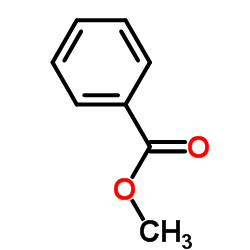 CAS#:93-58-3
CAS#:93-58-3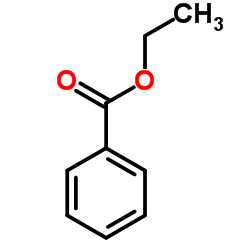 CAS#:93-89-0
CAS#:93-89-0![[1,1'-Biphenyl]-2,2'-dicarboxylicacid, 2,2'-dimethyl ester Structure](https://image.chemsrc.com/caspic/039/5807-64-7.png) CAS#:5807-64-7
CAS#:5807-64-7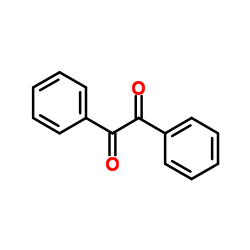 CAS#:134-81-6
CAS#:134-81-6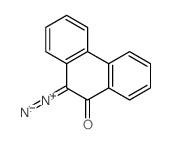 CAS#:7509-44-6
CAS#:7509-44-6![1-([1,1'-Biphenyl]-2-yl)ethanone Structure](https://image.chemsrc.com/caspic/270/2142-66-7.png) CAS#:2142-66-7
CAS#:2142-66-7 CAS#:467-69-6
CAS#:467-69-6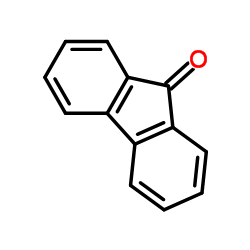 CAS#:486-25-9
CAS#:486-25-9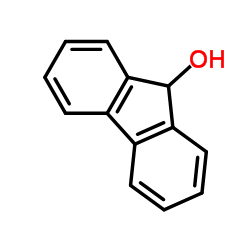 CAS#:1689-64-1
CAS#:1689-64-1 CAS#:14205-64-2
CAS#:14205-64-2 CAS#:14090-76-7
CAS#:14090-76-7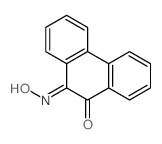 CAS#:14140-04-6
CAS#:14140-04-6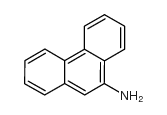 CAS#:947-73-9
CAS#:947-73-9 CAS#:863305-32-2
CAS#:863305-32-2 CAS#:4445-30-1
CAS#:4445-30-1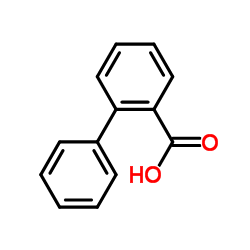 CAS#:947-84-2
CAS#:947-84-2
